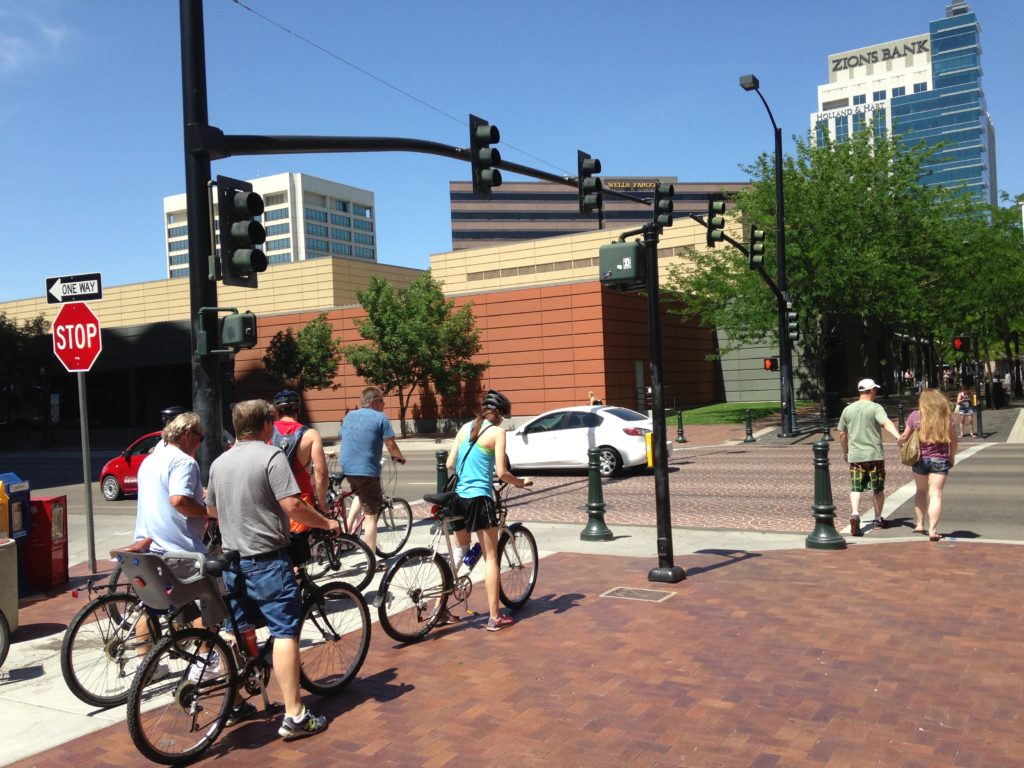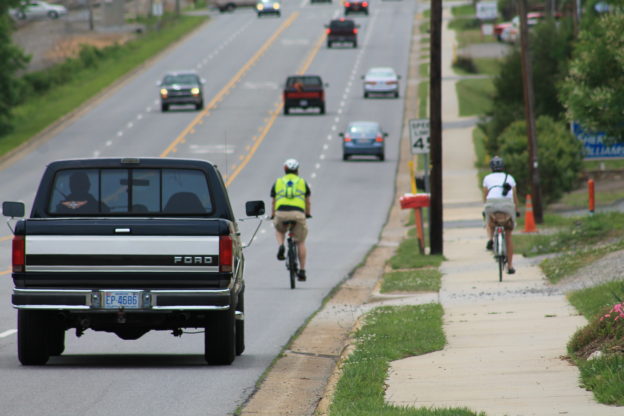By Don Kostelec
January 24, 2019
The rivalry between vehicular cyclists and bicyclists who want more dedicated and separated facilities is intense. The battle plays out in social media on a daily basis. It can get ugly.
I support the construction of properly-designed dedicated and separated facilities in high speed, high volume roadway situations.
I also support a bicyclists right to use the general travel lanes if they are of a riding philosophy and comfort level where they prefer those lanes.
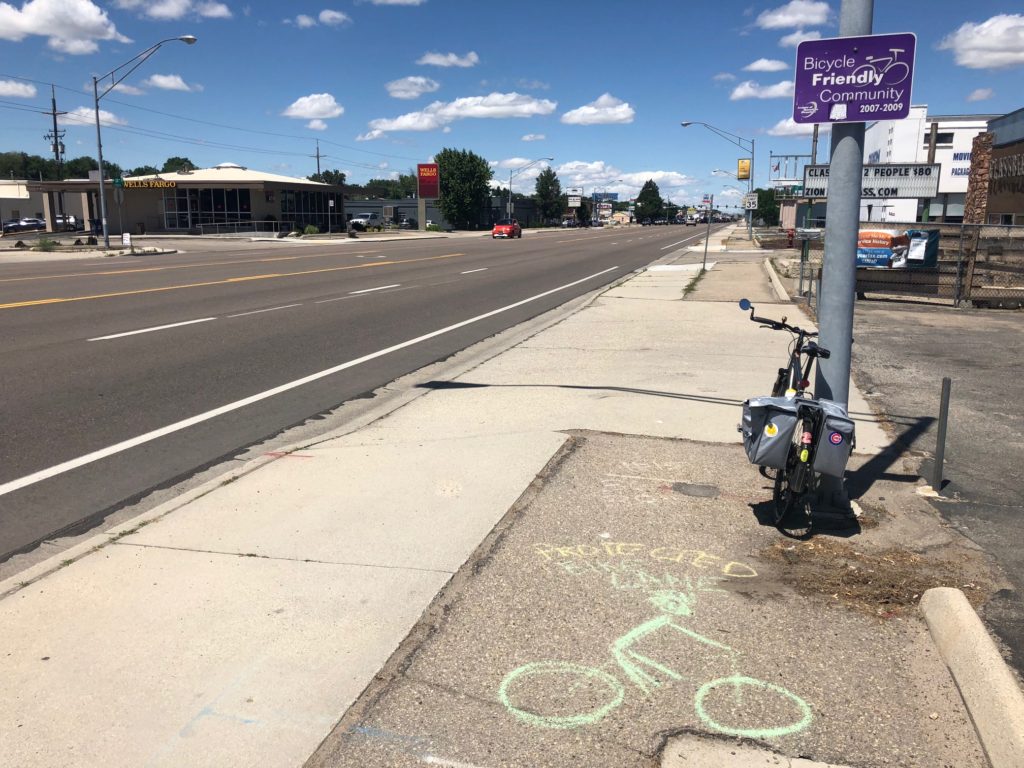
I believe the countries that have the highest and safest rates of bicycling are those that have worked diligently since the early 1970s to refine road design so bicyclists of all ages and abilities can safely operate across an entire street network. The United States practically abandoned the practice of separated or protected facilities in the early 1970s as the vehicular cycling movement overwhelmed others voices of the time. I wrote about an early attempt at protected bike lanes in the Boise region in this Idaho Statesman piece about Chinden Boulevard.
I watch both sides of this debate closely. Neither side is right nor wrong, so I thought I’d clarify where I stand in terms of viewing the vehicular cyclists viewpoints that run counter to those who supported separated facilities. (And may God bless my mentions in the online forums on both sides of this fence.)
Where Vehicular Cyclists are right:
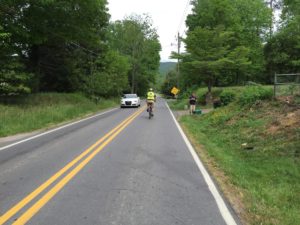
- How to ride in the absence of facilities: The vehicular cycling approach to taking the lane is the best way to ride when you have nothing but general purpose lanes to use, when you have to make certain types of turns, and when you find yourself in confusing situations. It takes some getting used to in terms of moving away from the edge, but it puts people who bike in the best situation possible when the general travel lane is what you have and when you have to leave a protected facility to make the final leg of your trip. Take command. Be aware. Communicate. Be visible and predictable. It’s all valid, and it’s all good to know and practice no matter where you ride because chances are you’ll eventually find yourself in a situation where you have to use those skills. Having motorists see it this way is a completely different story.
- Criticism of intersection design: Bicycling infrastructure is only as good as its weakest link. And oftentimes that weakest link in an in-street bike lane or a protected facility is also where bicyclists are most vulnerable: At intersections. Bike lanes routinely disappear at intersections. There are poor transitions from the near side to the far side of intersections for bicyclists. The fear of the right hook while performing a through movement in a bike lane while vehicles to the left of you are turning right is a traffic engineering failure. Protected facilities have inadequate design as they cross intersections and driveways. Yep, it all counts as engineering malfeasance in my book.
- Fear of not being able to use motor vehicle travel lanes when separated facilities are present: States like Oregon have relegated bicyclists to sidepaths instead of the road when those pathways exist. They shouldn’t. I’ve heard from many vehicular cycling advocates over the years that their main opposition to protected infrastructures is fear that elected officials and law enforcement will force them to the slower-speed facilities that are separated from the road. Laws should recognize different riding preferences and ride types so they don’t force those who want to ride among general lane traffic to use a separated facilities. I don’t want the VC roadie bombing down the shared use path or cycle track at 20+ mph next to my family. I don’t want to impede their movement. And I don’t want VCs to feel relegated to a facility that doesn’t meet their riding needs.
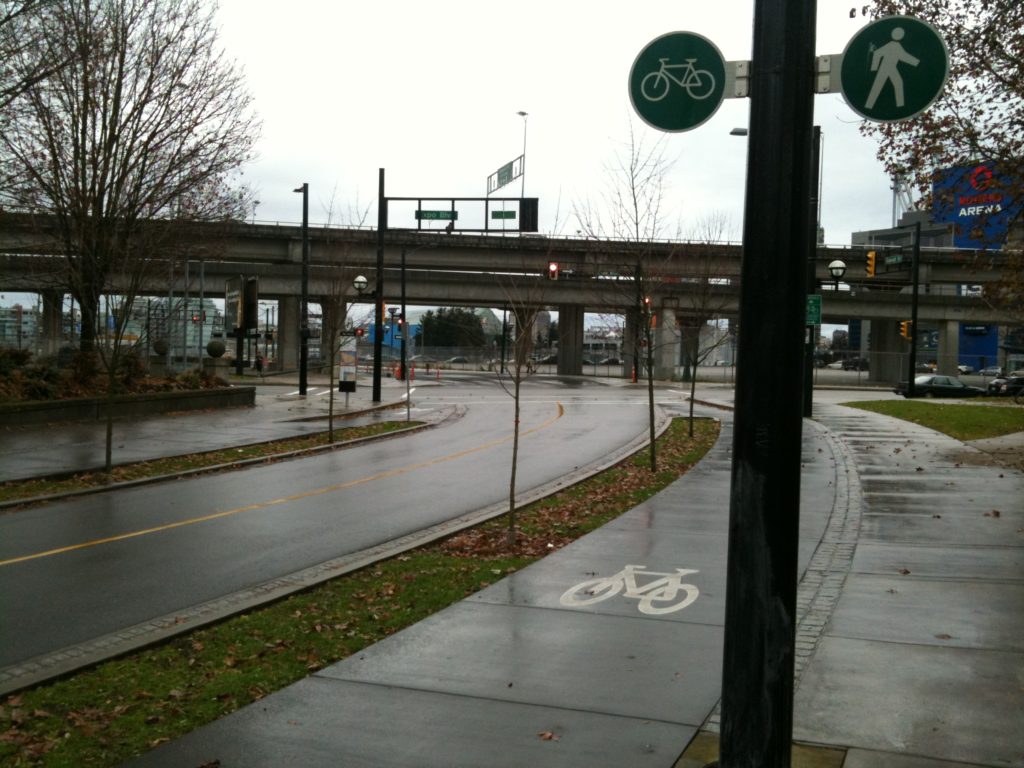
- A need to slow the cars: The self-enforcing road is something all bicyclists should endorse. The vehicular cyclists will point out that roads in many urban environments in Europe are designed to slow speeds of motorists where bicyclists use the general travel lanes. A low volume, low speed environment should be conducive to use by bicyclists and vehicles if the road design follows Vision Zero principles. The effects of this remain limited to situations where speeds and volumes are both low and confines are tight.
- Concerns over two-way cycle tracks in urban environments: I tend to fear the two-way cycle track in urban environments as much as the vehicular cyclists. The conflicts they create at driveways and intersections are disconcerting, as are the contraflow movement against adjacent general lane traffic, especially in cycle tracks that have no real physical protection from the general travel lanes (e.g. only a painted buffer and/or flexposts). We should reserve two-way cycle tracks for suburban locations where access control for vehicles is prevalent along the corridor or in urban settings where a fully-protected corridor is possible for a long distance.
Where Vehicular Cyclists are wrong:
- Viewing the VC riding philosophy as a street design philosophy: This is probably the largest sticking point between the two different groups of bicyclists. While I agree that vehicular cycling concepts are best in the absence of any infrastructure and with bad bicycling infrastructure, I don’t believe vehicular cycling should be confused as a way that streets should be designed. If the solution to the bicyclists who are “traffic averse” is to force them to take the lane, then we’ll never make bicycling a normal, everyday activity.
- Education will solve the problems: The biggest frustration I have with my most vocal vehicular cycling friends is their insistence that a greater focus on education among motorists and bicyclists would seemingly solve the problem. The education-based approaches to traffic safety have never worked and is why the Vision Zero safe systems approach is now seen as the best way to deal with safety. Education and enforcement impacts only a small percentage of a road’s users a small percentage of the time. Safe systems engineering impacts 100% of a road’s users 100% of the time. When that occurs, education and enforcement can be effective in terms of addressing that last small percentage of road users who still won’t conform to self-enforcing road conventions.
- “If everyone would just…”: If everyone would just try the vehicular cycling approach they’d love it, right? If everyone would just follow the rules of the road, then no one would be killed or injured. Sorry. My child. My spouse. And now myself on most days doesn’t buy it.
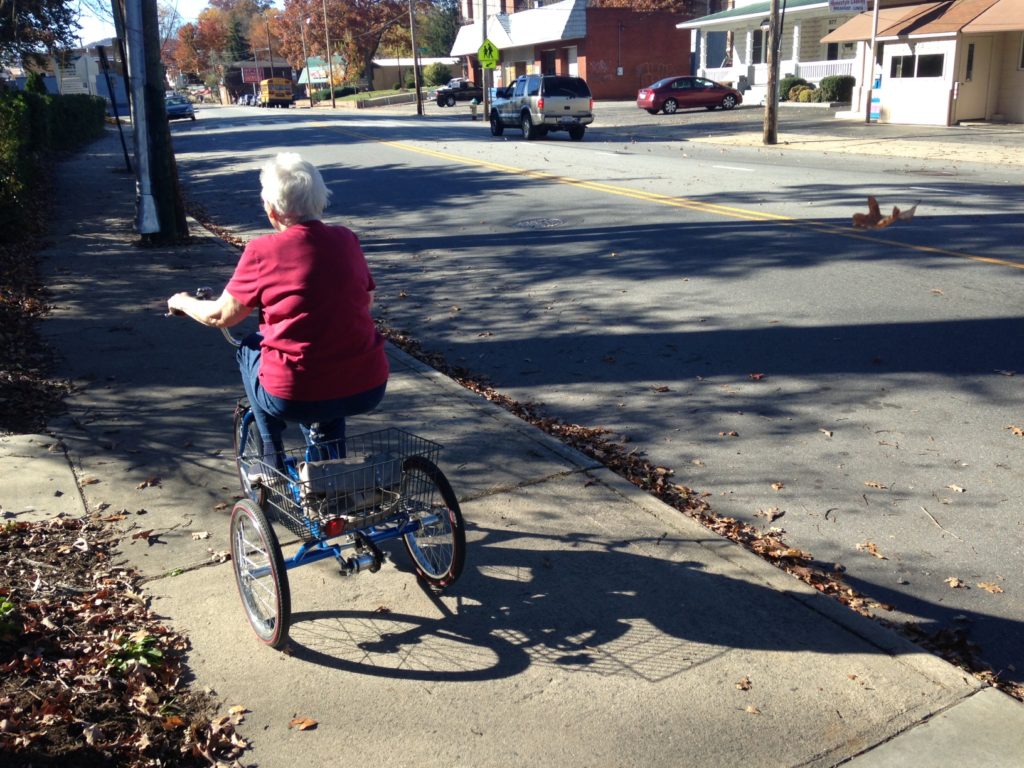
- Parallel routes: A lot of space in VC forums is dedicated to the need for parallel routes for those who are traffic averse. That’s great if you’re out for a weekend ride with the family. It’s not so great when you have a transportation purpose in mind or your city wants to reduce vehicle miles traveled. The VC folks use bicycling as transportation and are incredibly passionate about doing so. The reason they use busy roads is because they want to get to the same destinations as motorists. So do I. So does my family. We want to get to school, to work, to grocery stories, to cultural events. A parallel route doesn’t get us to our destination safely. And sometimes the opportunity for a parallel route is long gone due to past land use decisions. That means the parallel route must be alongside the road, in the form of a protected bikeway, with all the proper design to manage speed, access and intersection conflicts.
- Bicycling should be as white-knuckled as driving: Even in my most confident vehicular cycling days, my commute was still a slog. While being healthy, it didn’t make me any less edgy than I am when I drive in an urban environment. Bicycling is a social endeavor in addition to being economical and healthy transportation. My morning commute with my daughter to school is a family bonding experience. We have that because of a protected facility. By expecting bicyclists to always have situational awareness means they must be as on-edge as every motor vehicle driver is at the same time. I don’t want to be a motorist on a bike and a I don’t think of myself that way. In an urban environment I want to have an experience, socialize with someone as I pedal, and get to my destination happy and refreshed. That doesn’t mean I don’t recognize we must have heightened awareness as I ride. But in my experience in Europe when my daughter was 7 years old, the ride through cities in protected facilities was a much more pleasant experience than any take the lane endeavor we ever attempted in the United States.
